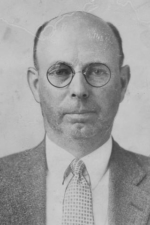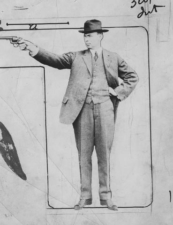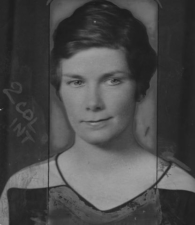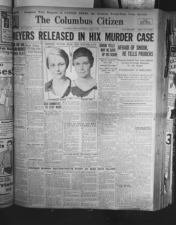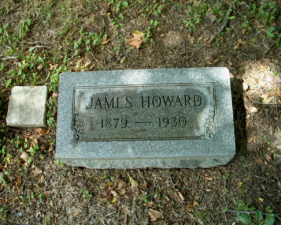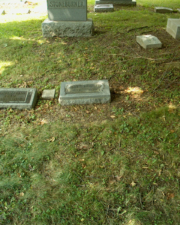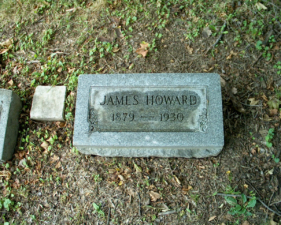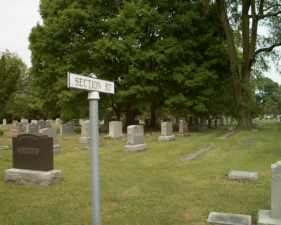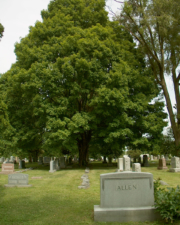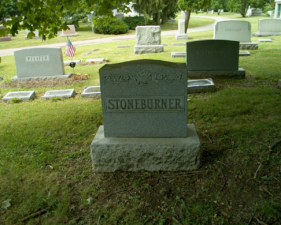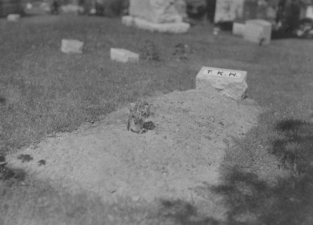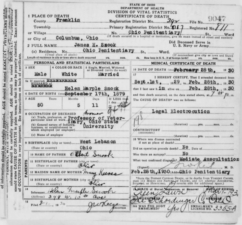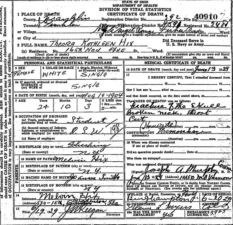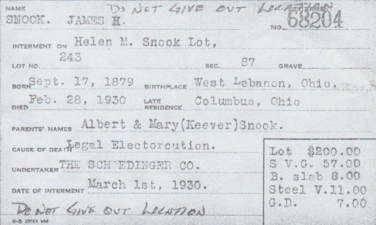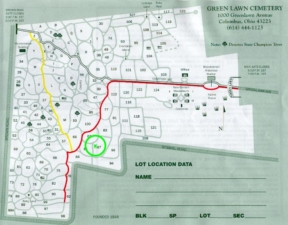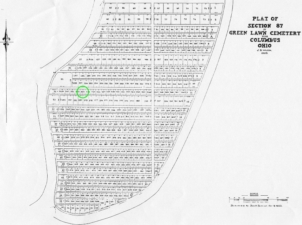While this page is somewhat out-of-the-ordinary for what we normally post on the OES website, we felt it important to post due to the legend and mystery that surrounded the final resting place of Doctor Snook. It seemed that everyone knew the infamous doctor was buried in Green Lawn Cemetery, but no one knew the exact location of his grave. Many speculated that he was buried in an unmarked grave for fear of retribution for his heinous crime. This was fueled by the staff at Green Lawn Cemetery’s office not releasing any information on the whereabouts of Dr. Snook’s grave. After more than 75 years of secrecy, it is time that his grave site is revealed.
But first, let’s find out who Dr. Snook was and why all the secrecy. Doctor James Howard Snook was living the good life. He was a professor of Veterinary Medicine at the Ohio State University, as well as being a horse surgeon. He had many successes in life: a devout wife, a child, two Olympic gold medals for pistol shooting, and the respect of the entire city of Columbus. Snook had a secret though, a forbidden love affair with OSU student Theora Hix.
The affair began in June of 1926 when Snook, then 46, offered Theora, 21, a ride back to her dorm room at Mack Hall one evening. Three weeks after they met, they became lovers. Early in their relationship, Snook and Hix often met at various locations around Columbus and would sometimes drive out to the country to have their relations. Between 1926 and 1929, Snook rented a rooming house at 24 Hubbard Avenue so he and Hix could have a more permanent meeting place. They would meet there as many as two to three times a week, usually between 6:00 PM and 9:00 PM.
Many thought of Theora as an innocent victim of an older man, but she was no angel. She was often moody and disagreeable, stating to Snook that her other lover, Marion Myers, was sexually superior to Snook and gave her much more pleasure. She recommended that Snook study-up on sexual matters and referred him to several books. Snook complied. Clearly Hix wore the pants in the relationship, often making demands of the doctor, and at times, could be very cruel. Snook later stated that their relationship was purely sexual, neither loving the other. “We satisfied each other’s needs,” he later testified in court.
During the course of their relationship, Hix became frightened after a break-in at her dorm room. Snook gave her a Remington derringer for protection and the two often went to the New York Central shooting range on Fisher Road near McKinley Avenue to practice. It is in the weeds of that shooting range where the body of Theora Hix was discovered on June 16, 1929, by two 16-year-old boys. Her roommates, Beatrice and Alice Bustin, had filed a missing person report on Theora earlier that day after she did not return home. They later identified her body. Theora’s roommates identified several of her “boyfriends,” but it was not until Mrs. Margaret Smalley, who rented the Hubbard Avenue love nest to Snook, identified him as the man who rented the home after seeing his photo in the newspaper. She stated that he rented the place as Howard Snook, saying that he was a salt salesman and Theora was his young wife.
Snook was later arrested and his trial gained national attention. The courtroom was packed everyday with curious people wanting to hear the seedy testimony first-hand. Some began to wait as early as 3:00 AM on the street in front of the courthouse for a good seat. During the trial, Snook testified that he and Hix drove to the Scioto Country Club to make love. Once they arrived, Hix determined the spot was not suitable because she “would like to go someplace where I can scream.” Snook then drove his Ford coupe to the New York Central shooting range where they tried to have sex in the small car. They decided that it was unsatisfactory for both of them and Snook told Hix that he needed to leave to prepare a trip to his mother’s house out of town.
Snook then testified that Theora became very angry, saying, “Damn your mother. I don’t care about your mother. Damn Mrs. Snook. I’m going to kill her and get her out of the way.” Snook continued to testify that Hix continued to threaten his family, even to go so far as killing his young daughter. The doctor then stated that Theora grabbed open his trousers and began to bite and pull at his private area so hard, he could not tolerate the pain. Snook said he grabbed the ball-peen hammer from his kit in the back of the car and hit her with it. When he freed himself from her grasp, Snook testified that Hix stated, “Damn you, I will kill you too.”
According to Snook, Theora then slid out of her car and began digging through her purse. Afraid that she was searching for her pistol, Snook struck her in the head several times with the ball-peen hammer until she fell to the ground. Snook’s story of cutting Hix’s neck varied. He first stated that he did not know how her neck had been cut open, but later said that he had cut her throat because he did not want to see her suffer. The cut across her jugular vein and carotid artery was so precise that only someone knowledgeable and experienced in anatomy could have made them.
The evidence was stacked against Snook as well. Theora’s blood was found inside his car, on the clothing he wore the night of the murder, on his ball-peen hammer, and on his pocket knife. Snook had attempted to clean the items, but the cleaning job apparently was not thorough enough. The details of the case were so lucid that its dirty details were removed from “complete” transcripts of the trials published in Columbus newspapers. Persons under the age of 18 were not permitted in the courtroom. In fact, one author stated “If this trial had been a movie, it would have been a blockbuster.”
The trial lasted less than a month and on August 14, 1929, the jury returned a verdict of “guilty of murder in the first degree as he stands charged in the indictment,” after just 28 minutes of deliberation. Snook was sentenced to die in the Ohio Penitentiary’s electric chair. Just before his execution, Snook supposedly confessed to the warden that the murder had been premeditated. The warden stated that Snook had placed the hammer and knife in the car so they would be close at hand when the opportunity presented itself. The rendezvous at the shooting range had been his first opportunity for the murder, which he made look like the workings of a maniac. Snook described the murder as a “logical and inevitable conclusion to a ‘convenient arrangement.'” It is believed that the warden’s account of Snook’s full confession had been completely fabricated by the warden and that Snook’s signature was likely forged on the document. After several attempts by Snook to obtain a new trial or change the verdict to manslaughter or second degree murder, Snook was executed on February 28, 1930, in the electric chair at the Ohio Penitentiary. A short service was held at the King Avenue Methodist Church and he was given a private burial at Green Lawn Cemetery.
Snook’s ghost is said to be seen wandering the grounds at the cemetery from time to time, but the exact location of his grave had been kept a secret for fear of vandalism or worse. After more than 75 years, we felt it was time for Snook’s grave to be revealed. After much dedicated research by the Ohio Exploration Society, the location of the grave of James Howard Snook is no longer a mystery. During the summer of 2005, the OES found Snook’s grave. Doctor Snook is buried in Section 87 of the massive cemetery, his tombstone omitting his last name to only read, “James Howard; 1879-1930.” Photographs of his tombstone along with some historical photos and scans of the documentation that helped us find Snook’s grave are below.
Location Information: Active Cemetery
Doctor Snook’s grave is in Section 87 of Green Lawn Cemetery in Columbus; Franklin County.
Photographs
Related Links
Snook: Murder by the Fourth Estate by JT Guy for a fictionalized telling of the Snook story.
Faded Into The Mists of Time – Dr. James H. Snook family history page by Michael Josef Von Gebel.


